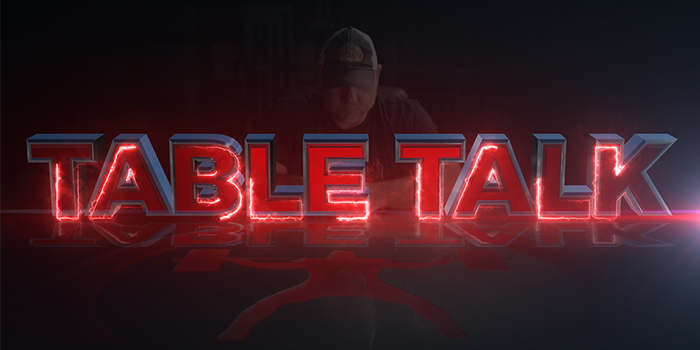
One of the key tenants of the conjugate method is max effort work: pick an exercise with correspondence to the competition lift you're training that day, work up to a one-rep max, and make sure you beat the weight you lifted on that movement last time. For today's Table Talk, Dave responds to a question about how this method compares to doing doubles and triples rather than working up to a one-rep max.
"The trend in powerlifting seems to be going away from taking 1RMs in the gym. Looking back on your competitive career do you think doing more doubles and triples could've helped you progress more?"
Dave answers that, because he trained with a conjugate method for the final ten years of his career, more doubles and triples would not have been beneficial to his powerlifting. One significant reason for this is that the chance of injury is always higher with a double or a triple than with a single. When you take a heavy single in training, fatigue doesn't come into play the way that it does for a double, a triple, or a higher-rep set. For a single, you're more able to be mentally locked in and are more likely to perform the lift in a technically sound manner. If you're doing a double or a triple, after the first rep fatigue starts to set in and can increase the likelihood of a technical breakdown, thus greatly increasing the chance of injury.
WATCH: Table Talk — When to Rotate Supplemental and Accessory Exercises
For those who do train with a conjugate method, Dave says that there is a place for triples on a max effort day — but only in a submaximal manner. For instance, if you're working up in heavy singles for a max effort day and something doesn't feel right, choosing to forego the max single for a lighter set of three may be a good call. Because Dave considers "maximal" to mean work in the 90% or greater range, this "submaximal" triple would have to be under 90%, and shouldn't be considered max effort work. It also should not be performed in addition to max effort work.
Three Common Max Effort Mistakes
To best understand the place for submaximal work in a conjugate program, Dave says you first have to avoid several mistakes that are very common in max effort work.
The first mistake Dave points out is treating max effort work like it's a competition lift. Max effort training in the gym should not be performed in a competitive mental state. Mentally, you should be in a training state, which will mean a lower level of arousal than in competition. This should easily reduce your top number by five to 10% on your max effort lifts.
The second mistake is sticking with the same exercises too long. If you're an advanced lifter you should be changing the main exercise out each week, and there should be a lot of thought put into how you're ordering those exercises. The changes from week to week don't always have to be dramatic; for instance, if you're trying to bring up the board press because you know it has a high carryover to your competition bench, you might only need to switch from a two-board press one week to a one-board press the following week.
The third mistake is misunderstanding the purpose of max effort work. The two goals of max effort work are to teach you to strain and to teach you to strain under time. After those goals, there are opportunities to improve neuromuscular coordination, technical proficiency, and weak points, but max effort work is not the optimal time to address those things. For most people, what matters is learning to strain in a way that will carry over to the lift you're trying to build. This is more important than the number of exercises you rotate through.
Finding A Place for Submaximal Work
Whether you can benefit from heavy doubles or triples in your training is entirely dependent on the type of programming you use. If you're doing max effort work, it should be paired with dynamic effort work and repetition effort work. This would be a concurrent model in which you're building multiple strength qualities at the same time. Using this method, there's no place for heavy doubles or triples, because you're already performing max work, speed work, and repetition work. Adding heavy doubles and triples would require taking out another part of the training.
However, if you're instead using a block model, for instance, doubles and triples will come into play. With this method, you're trying to train different strength qualities in each block instead of training all qualities at once, which will allow you to implement heavy doubles and triples in your program, likely in the 85% and higher range.
Dave concludes his answer to the question by detailing the type of things he would consider in attempting to add submaximal work to a conjugate or concurrent program. Because the best approach will vary from person to person, Dave outlines the factors he would consider and gives examples of when he might make specific changes.










